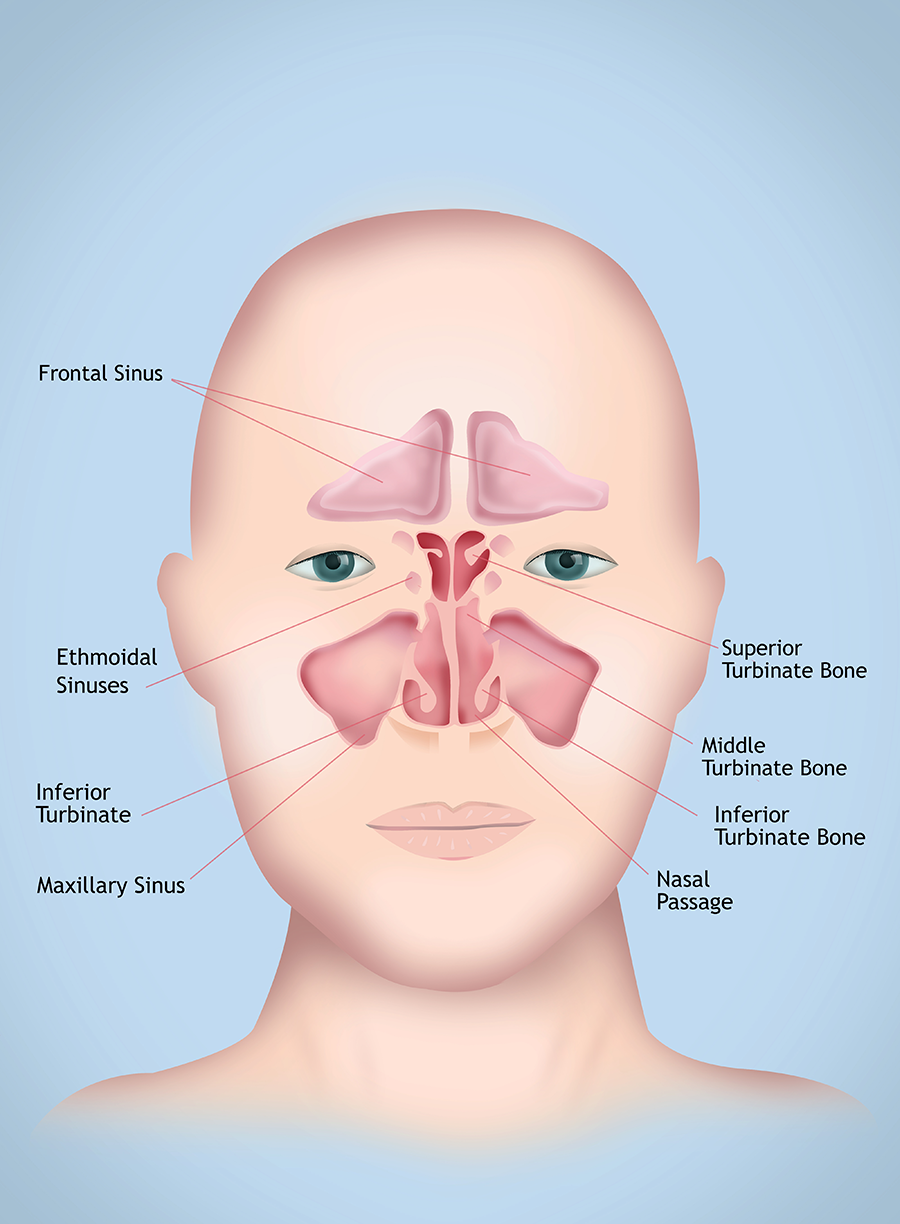What is the problem?
You have a problem in the sinuses around your nose. Nasal sinus disease can cause many different symptoms, including:
- facial pain
- a feeling of fullness around the face
- difficulty breathing through the nose
- a persistent bad smell in the nose
- a nasal discharge to the back of the throat, called a postnasal discharge
- headaches
Sometimes sinus problems cause hoarseness, a cough or many other symptoms. All of these problems can also occur for other reasons, without sinus disease. We often use functional endoscopic sinus surgery to treat people with recurring sinus problems.
What are the sinuses?
Your sinuses are air filled cavities inside the bones of your face and skull. They have a mucous membrane lining. You have:
- a sinus in each cheek, called the maxillary sinus. This is sometimes called the maxillary antrum
- several small sinuses between your eyes, called the ethmoidal sinuses
- two sinuses in the middle of your forehead, called the frontal sinuses
- one sinus at the back of your nose, called the sphenoid sinus

They all connect with your nose through tiny holes, called passages or ostia. The maxillary sinus is connected to the inside of the nose by a very small hole.
What has gone wrong?
Many different conditions could affect your sinuses. The mucous membrane lining of a sinus can swell because of allergy, infection, polyps or growths. Any swelling may block the opening of a sinus into your nose causing a headache, face pain or pain behind your eyes. The various passages leading to the sinuses vary in shape and size. As a result, one sinus may be more prone to infection and blockage than another. A CT scan of the sinuses will help localise the site of the pathology.
What are the aims of surgery?
The aim is to examine the inside your nose and sinuses and treat any problems found. This is done by using very narrow telescopes, called endoscopes, to do the examination. These endoscopes are about as thick as a drinking straw and have special lenses. These enable direct examination of the narrow passages deep inside your nose that lead into the various sinuses. Using very fine instruments, small amounts of bone or infected tissue from the passageways and sinuses are removed. This will re-establish normal ventilation and mucus drainage from the sinuses. This type of examination and treatment is called functional endoscopic sinus surgery (FESS).
What are the benefits of surgery?
This operation can relieve your symptoms by re-establishing normal ventilation and mucus drainage. The advantages of operating with endoscopes include:
- there is often less removal of normal tissues than with open surgery
- endoscopes give a direct view of any problems
- small endoscopes and fine instruments allow surgery in the tiny spaces of the nose and sinuses
- there is no need for cuts in the skin
What if you do nothing?
If you do nothing your chronic sinus problems will probably continue. Your GP may prescribe more antibiotics for you, but these won’t necessarily unblock obstructed sinuses.
Who should have FESS?
In general, endoscopic sinus surgery is intended for patients with chronic sinus problems that have not responded to medical therapy. If you have sinus problems that do not settle with nasal sprays or drops, or require repeated treatments, you should consider the need for surgery.
Who should not have surgery?
- if infection or inflammation does clear with antibiotics or decongestants, then you may not need surgery
- if you have a medical condition that would make a general anaesthetic unsafe then you should not have surgery
